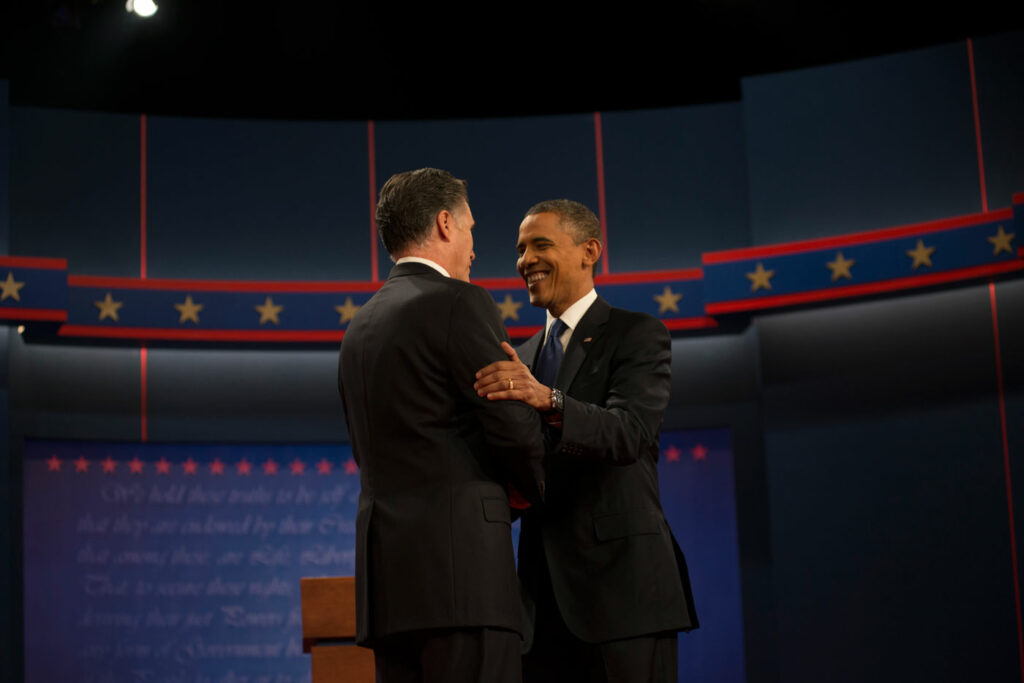Media coverage of Presidential debates seems to gravitate to quotes from undecided voters expressing their disappointment that the contenders can’t seem to get along and just agree on things. I’m sorry, but don’t these folks get it? Two guys, one job; what could create a more gladiatorial environment than that?! It’s not the purpose of this job-application debate process to find common ground; it’s meant to help us choose one or the other. The real trick for these guys is figuring out how to convey that, once they move into a governing role, they can take a bi-partisan approach to the big decisions facing America.
Even in governing, the notion of bipartisanship is a challenge—especially at the national level. If you pay any attention at all to politics you know that our process of creating Congressional districts, combined with a growing American tendency to cluster with people who think similarly, has polarized the Congress. What we don’t talk about as much is that we ask Congress to decide on some of the most contentious issues possible. On the majority of issues they face there are winners and losers. As importantly, there are different understandings of facts (What’s the best strategy for creating jobs and stimulating growth? For creating peace in the Middle East? How much debt can the nation handle?), and the issues often touch on deeply held beliefs (abortion is the easiest example, but climate science, food policy and almost any social issue tap into the same deeply held ideas).
Life may have become more complex in the 21st century, but earlier generations of leaders disagreed vehemently, too. Some of their solutions for coping with those disagreements can be instructive. We’ve always gravitated to an example in the 1960s and ’70s when Congress agreed that, in order to resolve diametrically opposed beliefs about how people would behave under different policies, the U.S. government would sponsor large-scale experiments in a range of social policy areas—health, housing, jobs, education, welfare and others—to improve knowledge and create an opportunity for common understanding. That stage of experimenting led to a number of bi-partisan public policy decisions based more on fact than opinion. Some of this type of experimentation persists today, but it’s hard to see its impact on the Congressional decision process.
That period of time also led to the creation of the modern generation of public policy graduate schools, where young professionals can learn how to build policies based on solid analysis. Over the last couple decades, those schools have flourished even as they have had to adapt to a world in which there are few non-partisan issues, only bi-partisan understandings. One of those schools we know well is the Humphrey School of Public Affairs at the University of Minnesota, named after former Vice President Hubert Humphrey, known as the Happy Warrior and also as someone who bridged partisan divides. The school has an annual awards dinner that celebrates government leaders who have successfully tackled big, contentious challenges in ways that lead to bi-partisan solutions. We enjoy these dinners for this reinforcement of the idea that there can be bi-partisan solutions and because they celebrate leaders who have successfully worked to find them.



